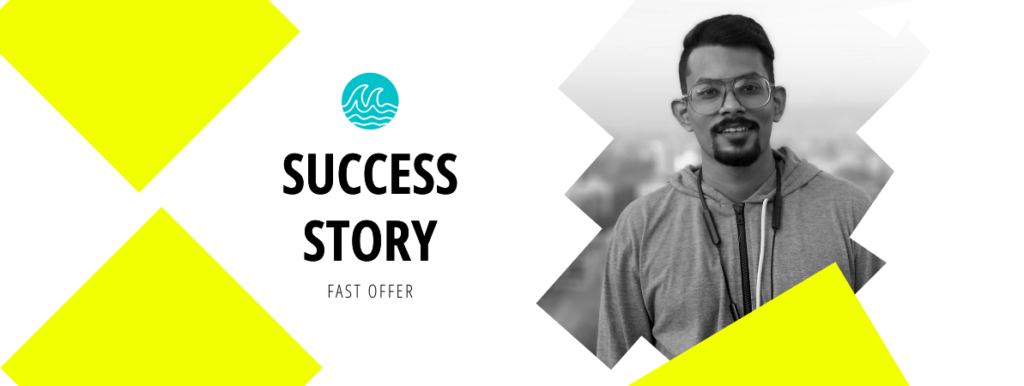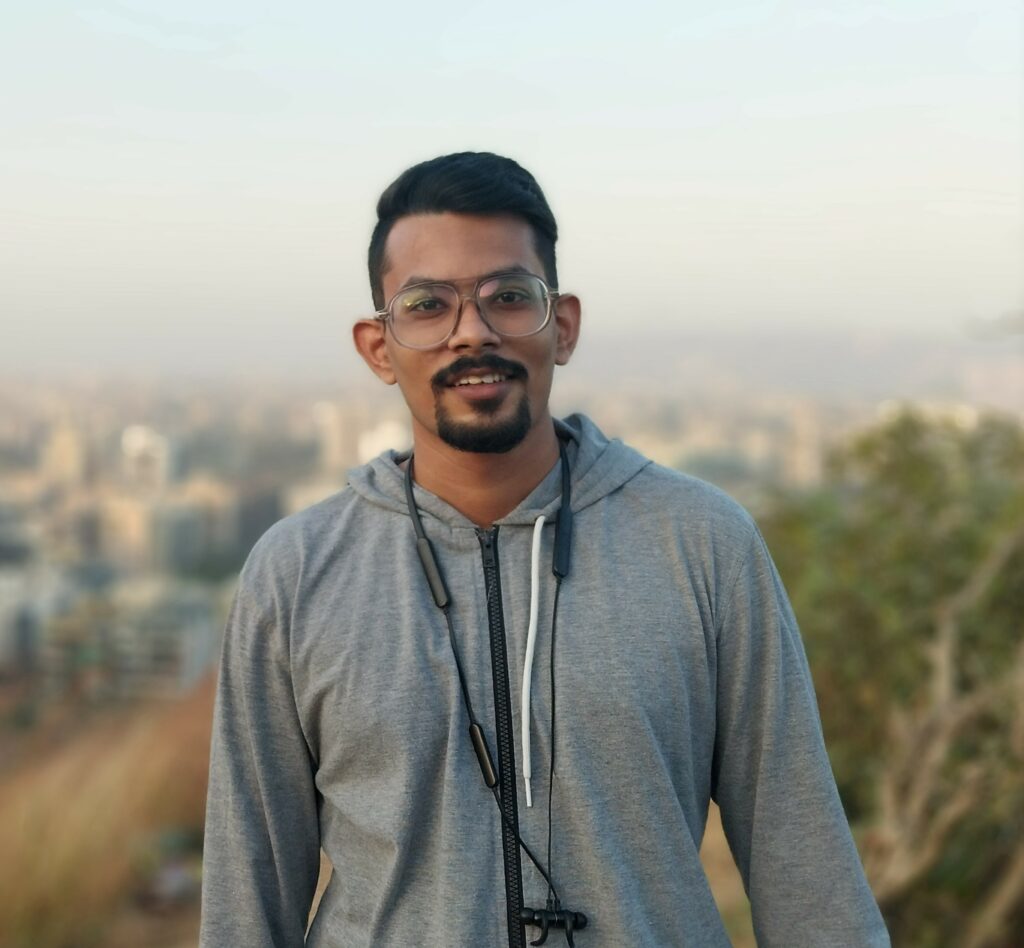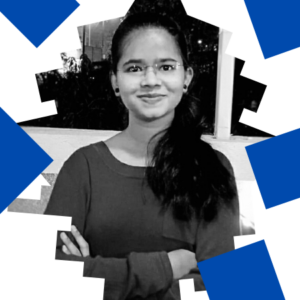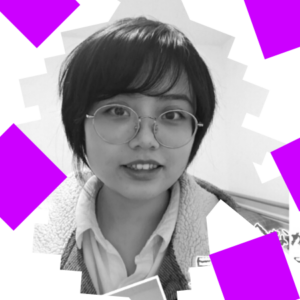
Home » 26062
COMPANY:
world's largest automotive safety supplier, with sales to all major car manufacturer
He majored in Mechanical Engineering at the University of Mumbai and his graduation research theme was "FSAE Chassis Design and Analysis". Participated in the student formula competition for two years and specializes in car body design using SOLIDWORKS and ANSYS. The level of conversation in Japanese is very high, and technical talk is also possible. He is currently studying electric vehicle design and aims to become a top engineer in the Japanese automobile industry in the future.
Profile
COUNTRY / REGION
India
SEX
Male
UNIVERSITY
Pillai College of Engineering (Mumbai University)
SPECIALIZATION
Mechanical Engineering
ACADEMIC LEVEL
Bachelor
MESSAGE
I enjoy the Japanese language, as well as their way of life, culture, and technology. I’m fascinated by how quickly new technologies are developed in Japan, as well as by how intelligent and hardworking its citizens are. When I was a young child studying Japanese history in school, I always had admiration for the unity and commitment the people shown in rebuilding their nation following a huge loss. My life was revolutionised by learning and studying Japanese for a year. I gained a better understanding of who I am, as well as my effect and duties in the world, by witnessing the discipline, diligence, and selflessness of the Japanese people. More precisely, I learnt to concentrate on pushing myself to work hard and aim for perfection. I can think of no better way to put these newly discovered ideals into reality as I got closer to graduation than by working and studying in Japan. The COVID problem and financial issues have been a major obstacle for me and have prevented me from achieving my goals. Fortunately, I stumbled on a post from a recruitment company while looking through social media, and that’s how I found out about the AtoJ program. I had had great aspirations after learning about the program that would help me realise my dreams. In addition to this, the real experiences I heard from a classmate who is currently working in Japan further fuelled my desire to visit that country in person. I think there are a lot of opportunities for work in automotive field in Japan and companies provide much more job security and benefits as compared to other countries.
After graduating in 2021, having discovered the means by which I might make my ambitions come true, I began studying Japanese. I chose to enrol in an Electric Vehicle Nanodegree programme while studying Japanese because I had no intention of pursuing a master’s degree. I was accepted into the “AtoJ x Pune University” programme for N3 after a year that flew by. I had to pass a casual interview with an AtoJ staff member in order to be accepted into this programme. This interview is primarily intended to assess our level of language proficiency and to gauge our level of comfort speaking Japanese. I realised that passing the JLPT alone wouldn’t magically enhance our speaking abilities. I then started using the several apps that are available on the Google Play store to learn how to communicate with locals. Both speaking and studying for the JLPT require equal amounts of work because they are two very separate learning processes.
I had to successfully complete several practise interviews held during the course as well as an interview with AtoJ staff in order to be considered for an interview. As I heard various perspectives on how to respond to interview questions in a Japanese interview, preparing for the questions was like riding a roller coaster. I practised interview phrases using my intuition, advice from my seniors and mentors, and some general guidelines for answering questions. My ability to pass the final interviews was greatly aided by speaking with the seniors and AtoJ mentors for assistance in editing my prepared responses. I learned about the entire process beforehand by speaking with the helpful seniors, which enabled me to be ready for the next step, which is to submit a PR video, an essay explaining why you want to work in Japan, and a project summary.
After clearing mock rounds and interview with AtoJ staff we have to submit the stuff mentioned above. I got to know that an essay on why you want to work in Japan should be treated as a SOP and explain in detail the reasons why you want to “work”. Before submitting, I had it evaluated by my teachers and seniors because companies often look at these documents. Within a week, my profile was selected, and I got invited for an interview with a well-known company that develops safety devices for almost all automobile manufacturers. AtoJ staff assigned me a mentor and we had some mentoring sessions for interview preparations and an orientation session to know more about the company. This process happened very quickly so being prepared helped me a lot.
My mentors and friends were the ones that helped me the most over the entire stressful process to remain composed. The AtoJ personnel goes above and beyond in terms of friendliness and assistance, and they ensure that everything runs smoothly. Since this was my first-time appearing for interviews, their support really meant a lot to me. Their inputs before and between two interviews really helped me to keep calm and stay focused. As teamwork is crucial for any business, I had to participate in two rounds of interviews where I was questioned about my past experiences working in a group. Other obvious questions were about FYP and education. I was only able to respond to the numerous impromptu queries because I had practised speaking Japanese. I wasn’t as confident after the second interview round since I felt I had performed poorly. But my mentor never gave up on me and constantly promoted optimism. The results were announced the same day and I couldn’t control my emotions, bursting with joy and thankfulness to everyone who helped me. Without their encouragement and assistance, it would not have been able to complete the task.
I may sum up by saying that I was fortunate to come upon a website like AtoJ. Learning Japanese from amazing teachers has been the most valuable lesson of my life. I’m in awe at the amount of aid I’ve gotten along the way, which has encouraged me to keep a positive attitude and give it my all. My mentors’ advice was really useful in helping me succeed in my interview. I am very appreciative of this fantastic opportunity and send my best wishes to Team AtoJ.
Looking forward to having a successful career and meeting A2J staff in Japan!
After graduating in 2021, having discovered the means by which I might make my ambitions come true, I began studying Japanese. I chose to enrol in an Electric Vehicle Nanodegree programme while studying Japanese because I had no intention of pursuing a master’s degree. I was accepted into the “AtoJ x Pune University” programme for N3 after a year that flew by. I had to pass a casual interview with an AtoJ staff member in order to be accepted into this programme. This interview is primarily intended to assess our level of language proficiency and to gauge our level of comfort speaking Japanese. I realised that passing the JLPT alone wouldn’t magically enhance our speaking abilities. I then started using the several apps that are available on the Google Play store to learn how to communicate with locals. Both speaking and studying for the JLPT require equal amounts of work because they are two very separate learning processes.
I had to successfully complete several practise interviews held during the course as well as an interview with AtoJ staff in order to be considered for an interview. As I heard various perspectives on how to respond to interview questions in a Japanese interview, preparing for the questions was like riding a roller coaster. I practised interview phrases using my intuition, advice from my seniors and mentors, and some general guidelines for answering questions. My ability to pass the final interviews was greatly aided by speaking with the seniors and AtoJ mentors for assistance in editing my prepared responses. I learned about the entire process beforehand by speaking with the helpful seniors, which enabled me to be ready for the next step, which is to submit a PR video, an essay explaining why you want to work in Japan, and a project summary.
After clearing mock rounds and interview with AtoJ staff we have to submit the stuff mentioned above. I got to know that an essay on why you want to work in Japan should be treated as a SOP and explain in detail the reasons why you want to “work”. Before submitting, I had it evaluated by my teachers and seniors because companies often look at these documents. Within a week, my profile was selected, and I got invited for an interview with a well-known company that develops safety devices for almost all automobile manufacturers. AtoJ staff assigned me a mentor and we had some mentoring sessions for interview preparations and an orientation session to know more about the company. This process happened very quickly so being prepared helped me a lot.
My mentors and friends were the ones that helped me the most over the entire stressful process to remain composed. The AtoJ personnel goes above and beyond in terms of friendliness and assistance, and they ensure that everything runs smoothly. Since this was my first-time appearing for interviews, their support really meant a lot to me. Their inputs before and between two interviews really helped me to keep calm and stay focused. As teamwork is crucial for any business, I had to participate in two rounds of interviews where I was questioned about my past experiences working in a group. Other obvious questions were about FYP and education. I was only able to respond to the numerous impromptu queries because I had practised speaking Japanese. I wasn’t as confident after the second interview round since I felt I had performed poorly. But my mentor never gave up on me and constantly promoted optimism. The results were announced the same day and I couldn’t control my emotions, bursting with joy and thankfulness to everyone who helped me. Without their encouragement and assistance, it would not have been able to complete the task.
I may sum up by saying that I was fortunate to come upon a website like AtoJ. Learning Japanese from amazing teachers has been the most valuable lesson of my life. I’m in awe at the amount of aid I’ve gotten along the way, which has encouraged me to keep a positive attitude and give it my all. My mentors’ advice was really useful in helping me succeed in my interview. I am very appreciative of this fantastic opportunity and send my best wishes to Team AtoJ.
Looking forward to having a successful career and meeting A2J staff in Japan!

FINAL YEAR PROJECT
卒業プロジェクト名:FSAEシャーシの設計と分析
名前:アディティヤ ヴィピン
大学:ムンバイ大学
専門:機械工学
チームメンバー:4人
紹介:
•フォーミュラ SAE 車設計大会は、工学部の学生が自分のスキルを応用し、工学コンテストで互いに競争するものです。
•この概要では、フォーミュラ SAE レース カーの完全なスペースフレーム チューブラー シャーシの設計と解析について説明します。
•シャーシは、フォーミュラ SAE 官憲者によって指定されたルールに従って、適切なエンジニアリング実践に従って設計されています。
•主に、軽量化、重量の集中化、高さの減少の3つの側面に焦点を当てました。
•シャーシには高いねじり剛性が必要です。 さらに、この概要では、設計プロセス、素材の選択、と製造と分析について説明します。
目的:
•シャーシは強くて、曲がったり壊れたりせずにコンポーネントの重量に耐える必要があります。
•軽量化、重量の集中化、高さの減少の側面に焦点を当てました。
•シャーシには高いねじり剛性が必要です。
•シャーシは、フォーミュラ SAE 官憲者によって指定されたルールを守るながら設計します。
•製造プロセスは簡単で、特殊な道具と素材の使用を最小限に抑えて行う必要があります。
•信頼性が高く、重要な部材の周りでたわみが少なくする必要があります。
•サイズは小さくしてもドライバーにとって快適で、重さが少なくしながらかなりの強さを備えたシャ-シを作ること。
方法論:
•初めにシャ-シについてインターネットで情報と論文を探しました。
•集めた論文の知識は、シャーシの基本的な知識と、業界でシャーシに関連するさまざまな用語と命名法を理解するのに十分でした。
•設計の検証のための分析プロセスについても説明されました。 この本は、私たちのプロジェクトの基盤であることが証明されました。
•FSAE から提供されたルールブックは、シャーシが次のように設計されることになっていたため、主な制約でした。FSAE ルールブックにあるルールに従うことが必要でした。
•シャーシの設計プロセス中に常にルールブック参照されます。設計プロセスは、FSAE フォーラムで相談して分かりました。
設計プロセス:
•設計プロセスを開始する前に、ドライバーにとって快適なポジションを確認する必要がありました。
•単純な人間工学的装置を作成して、運転者の最適な座席、ステアリング、ブレーキ ペダルの位置を見つけ出しました。
•バジェットの中で一番有益がある素材を決めました。
•この後、サスペンションの位置とドライバーの位置に従って、シャーシのスケッチを開始しました。
•スケッチ中は、ルールブックにあるルールを破らないように注意する必要がありました。
•これらのルールは、ドライバーの安全のためと、設計を安全にするために作成されています。
•ソリッドワークスとアンシスでスケッチを始めると、アンシスでの設計は難しくで、時間がかかることが分かりました。アンシスの設計に関する情報が見つからなかったため、アンシスの使用をやめることにしました。
•六つのスケッチを作成した後、3Dモデルを作成し、ソリッドワークスで分析を行いました。3Dモデルはルールブックに記載されている最低限の素材を考慮して作成しています。
•分析を行った後、製造しやすく、強度が最も良いシャ-シを選定しました。
•解析により、シャーシのねじり剛性を計算するために使用されるたわみ値が得られました。
結果と結論:
•シャーシは、ドライバーを保護するだけでなく、前後のサスペンション システム、エンジン ドライブトレイン、ステアリング システム、と車のその他の部分を支える重要な役割を果たします。
•プロジェクトの主な動機は、FSAE 規制を満たしながら、その役割を満たすようにスペースフレーム シャーシを設計することでした。ドライバー、重量、人間工学に特別な考慮が与えられた。
•6回目設計の変化した後、私たちは望んだ結果が貰いました。決めたバジェットによって素材を使っても、シャーシの重さは4㎏減って、強さは30%増えてきました。
•この結果は望んだ結果だけど もっと強くて軽いシャ-シを作りたいなら高い値段の素材が使用したほうが良いと思います。
•このプロジェクトの目標は、フォーミュラ設計大会のスペースフレームシャーシを設計するだけでなく、設計を完成させるための深い知識と目的を理解することでもありました。
•車をコンパクトにし、組み立てを容易にするのは、効果的な設計と設計の複雑さです。
•また、設計競争のすべての面で車が競争力を持ち、最高になるように、コスト、製造、設計時間の間で妥協する必要があることも学びました。ただし、シャーシを開発するには、何度か繰り返しを行う必要があります。
名前:アディティヤ ヴィピン
大学:ムンバイ大学
専門:機械工学
チームメンバー:4人
紹介:
•フォーミュラ SAE 車設計大会は、工学部の学生が自分のスキルを応用し、工学コンテストで互いに競争するものです。
•この概要では、フォーミュラ SAE レース カーの完全なスペースフレーム チューブラー シャーシの設計と解析について説明します。
•シャーシは、フォーミュラ SAE 官憲者によって指定されたルールに従って、適切なエンジニアリング実践に従って設計されています。
•主に、軽量化、重量の集中化、高さの減少の3つの側面に焦点を当てました。
•シャーシには高いねじり剛性が必要です。 さらに、この概要では、設計プロセス、素材の選択、と製造と分析について説明します。
目的:
•シャーシは強くて、曲がったり壊れたりせずにコンポーネントの重量に耐える必要があります。
•軽量化、重量の集中化、高さの減少の側面に焦点を当てました。
•シャーシには高いねじり剛性が必要です。
•シャーシは、フォーミュラ SAE 官憲者によって指定されたルールを守るながら設計します。
•製造プロセスは簡単で、特殊な道具と素材の使用を最小限に抑えて行う必要があります。
•信頼性が高く、重要な部材の周りでたわみが少なくする必要があります。
•サイズは小さくしてもドライバーにとって快適で、重さが少なくしながらかなりの強さを備えたシャ-シを作ること。
方法論:
•初めにシャ-シについてインターネットで情報と論文を探しました。
•集めた論文の知識は、シャーシの基本的な知識と、業界でシャーシに関連するさまざまな用語と命名法を理解するのに十分でした。
•設計の検証のための分析プロセスについても説明されました。 この本は、私たちのプロジェクトの基盤であることが証明されました。
•FSAE から提供されたルールブックは、シャーシが次のように設計されることになっていたため、主な制約でした。FSAE ルールブックにあるルールに従うことが必要でした。
•シャーシの設計プロセス中に常にルールブック参照されます。設計プロセスは、FSAE フォーラムで相談して分かりました。
設計プロセス:
•設計プロセスを開始する前に、ドライバーにとって快適なポジションを確認する必要がありました。
•単純な人間工学的装置を作成して、運転者の最適な座席、ステアリング、ブレーキ ペダルの位置を見つけ出しました。
•バジェットの中で一番有益がある素材を決めました。
•この後、サスペンションの位置とドライバーの位置に従って、シャーシのスケッチを開始しました。
•スケッチ中は、ルールブックにあるルールを破らないように注意する必要がありました。
•これらのルールは、ドライバーの安全のためと、設計を安全にするために作成されています。
•ソリッドワークスとアンシスでスケッチを始めると、アンシスでの設計は難しくで、時間がかかることが分かりました。アンシスの設計に関する情報が見つからなかったため、アンシスの使用をやめることにしました。
•六つのスケッチを作成した後、3Dモデルを作成し、ソリッドワークスで分析を行いました。3Dモデルはルールブックに記載されている最低限の素材を考慮して作成しています。
•分析を行った後、製造しやすく、強度が最も良いシャ-シを選定しました。
•解析により、シャーシのねじり剛性を計算するために使用されるたわみ値が得られました。
結果と結論:
•シャーシは、ドライバーを保護するだけでなく、前後のサスペンション システム、エンジン ドライブトレイン、ステアリング システム、と車のその他の部分を支える重要な役割を果たします。
•プロジェクトの主な動機は、FSAE 規制を満たしながら、その役割を満たすようにスペースフレーム シャーシを設計することでした。ドライバー、重量、人間工学に特別な考慮が与えられた。
•6回目設計の変化した後、私たちは望んだ結果が貰いました。決めたバジェットによって素材を使っても、シャーシの重さは4㎏減って、強さは30%増えてきました。
•この結果は望んだ結果だけど もっと強くて軽いシャ-シを作りたいなら高い値段の素材が使用したほうが良いと思います。
•このプロジェクトの目標は、フォーミュラ設計大会のスペースフレームシャーシを設計するだけでなく、設計を完成させるための深い知識と目的を理解することでもありました。
•車をコンパクトにし、組み立てを容易にするのは、効果的な設計と設計の複雑さです。
•また、設計競争のすべての面で車が競争力を持ち、最高になるように、コスト、製造、設計時間の間で妥協する必要があることも学びました。ただし、シャーシを開発するには、何度か繰り返しを行う必要があります。




